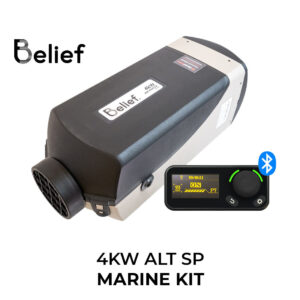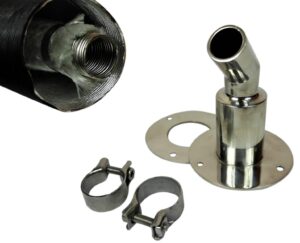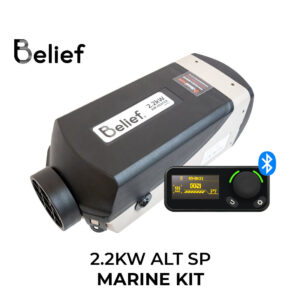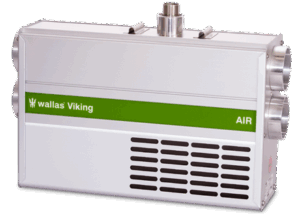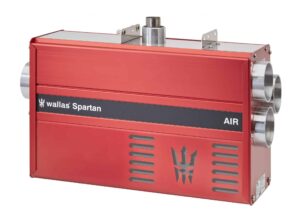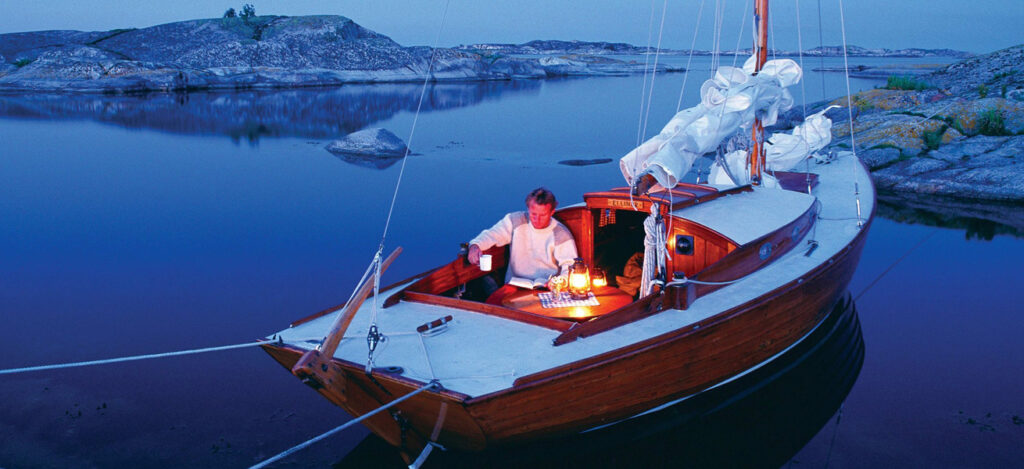
Choosing The Right Diesel Heater For your Boat
Choosing the right diesel air heater for your boat is crucial. You need to think about the brand and size of the heater, where to install it, the fuel source, and especially, the exhaust system.
You also need to consider whether your boat is better suited to direct air heating or hydronic heating. Read more here about the pros and cons of both types of heating.
What heater brand should I choose for my boat?
Dieselheat sells Wallas and Eberspacher which are both premium brands, we also sell Belief which is a more economical option.
Wallas Marine Specific Heaters: Wallas air heaters are renowned for being top-of-the-line heating solutions, designed specifically for boats. Handcrafted in Finland, these marine heaters are built to provide exceptional performance in demanding environments.
When it comes to quality and style, Wallas marine diesel heaters stand out as the ultimate choice for boat owners who seek reliability, durability, and modern design.
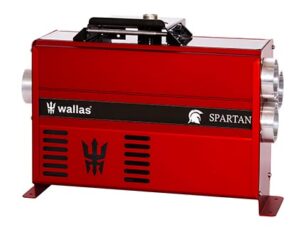
Marinised RV Heaters: Eberspacher and Belief are two leading brands known for producing high-quality RV heaters that are also suitable for marine applications. Both offer marine-specific mounts, exhaust systems, brushless motors, and sealed electronics to withstand harsh environments. These features make them durable, long-lasting, and reliable heating solutions for boats.
Key Differences Between Eberspacher and Belief Heaters
While the heater sizes, shapes, and kit contents are quite similar between the two, the main distinction lies in their manufacturing origins and market positioning:
- Eberspacher is a top-tier, German-made heater brand, known for premium quality and performance.
- Belief, on the other hand, is a mid-market Chinese-made heater brand, offering a more budget-friendly option without compromising on essential safety/reliability/features.
Whether you are looking for a premium marine heater with German engineering or a cost-effective alternative, both brands provide reliable options for keeping your boat warm in all weather conditions.
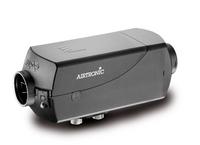
Factors to Consider When Choosing the Best Marine Diesel Heater
When selecting the right marine heater for your boat, it’s important to compare key factors such as price, control options, exhaust types, and overall functionality. Here’s a detailed comparison of Wallas, Eberspacher, and Belief marine heaters:
Factors
Wallas Marine Heaters
Eberspacher Marine Heaters
Belief Marine Heaters
Control Options
– Bluetooth app control
– Internet control available if onboard internet is present
– Wireless air temperature sensing
– Traditional wired digital controller
– No Bluetooth support
– Senses air temperature at the controller
– Traditional wired digital controller
– Supports Bluetooth app
– Senses air temperature at the controller
Exhaust Type
– Coaxial exhaust and combustion air
– Cool-to-touch exhaust pipes
– Marine-specific hull or deck fittings
– European marine exhaust systems
– Hot-to-touch exhaust (lagged and ducted)
– Welded inline mufflers
– European marine exhaust systems
– Hot-to-touch exhaust (lagged and ducted)
– Welded inline mufflers
Exhaust Exit Point
– Exhaust exits at the top for easy installation
– Exhaust exits at the bottom or side of heater
– Exhaust exits at the bottom or side of heater
Size
– Taller than boat-adapted RV heaters
– May not fit under seats but could fit in narrow lockers
– More compact than Wallas
– Easier to fit in tight spaces
Carbon Monoxide Safety
– Coaxial exhaust reduces risk of CO leaks
– Exhaust runs inside combustion inlet air pipe
– Exhaust leaks reburnt by the heater
– Single-layer exhaust system
– Should be inspected regularly to prevent CO leaks
– Single-layer exhaust system
– Should be inspected regularly to prevent CO leaks
Boat Drying Capability
– 2 or 3 inlets/outlets
– Option to bring in outside cool air to reduce moisture and condensation
– Single inlet/outlet
– Can split inlet to mix fresh and recirculated air (complex installation)
– Single inlet/outlet
– Can split inlet to mix fresh and recirculated air (complex installation)
Aesthetics
– Aircraft-grade aluminum and stainless steel design
Approx. Budget
Wallas Viking (3kW) or Spartan (4.5kW):
$3,500 – $6,000
(Depending on size and ducting and exhaust complexity)
What Size Heater Do I Need for My Boat?
Choosing the right marine heater size is essential to ensure your boat stays warm and comfortable. Here are key factors to consider when selecting the correct boat heater size:
- Area to Be Heated: The size of the space you need to heat matters more than the size of your boat. A large boat might have a small cabin, while a smaller boat could have a large one. Decide if you only need to heat the sleeping quarters or the entire boat.
- Number of Outlets: Longer ducting and more outlets can reduce heater efficiency. For larger or more complex systems, you’ll need a bigger heater to maintain proper airflow.
- Boat Construction: Steel and aluminum boats lose heat faster than wood or fiberglass boats. Consider the material when choosing your heater.
- Location and Climate: Your location plays a role. If you are just dabbling around Pittwater in NSW, your heating needs will differ to someone who is based in Tassie and heading south to explore.
- Ducting Requirements: Different heater sizes have different ducting diameters. Ensure that the ducting will fit in the available spaces.
Check the heater size guide at the bottom of this page for detailed recommendations based on your boat’s specifics.
Where Should I Source Fuel for My Boat Heater?
Most boats have diesel on board, so the best option is to tap into the existing supply. :
- Tap into the existing fuel tank: If there is access add a new intake to the top of the tank.
- Tee into fuel line: A heater can pick up fuel from the low pressure feed side of an engine or generator fuel line.
- Remote Fuel Filter: Connect the heater to the remote fuel filter of your main engine or generator.
- Ancillary Fuel Tank: For boats without an onboard diesel supply or if the tank is too far away, use a separate marine fuel tank. These can be installed in engine rooms, fuel lockers or cupboards. Even a 10L tank can provide hours of operation due to the low fuel consumption of diesel heaters.
Where Should I Install My Marine Heater?
Proper installation of a boat heater is crucial for both safety and performance. Here are some important considerations:
- Keep It Dry: No heater is designed to handle splashing or immersion in saltwater. Avoid installing the heater in damp bilges, old engine rooms, or other areas prone to moisture and humidity.
- Ideal Installation Locations: Suitable locations include cupboards, dry machinery spaces, or spare lockers. Ensure there’s access to the exhaust exit point and both recirculated and fresh air inlets.
- Ducting and Venting: Access for the hot outlet air ducting and vents is important. We offer various ducting and venting solutions to suit different setups.
- Exhaust Length: All marine heaters have a maximum exhaust length of 2 meters, so this is a key factor when deciding where to install the heater.
- Marine vs. RV Heaters: Wallas heaters have top-exiting exhausts, making installation easier. RV heaters have bottom or side-exiting exhausts, so space is needed to route the exhaust to a high exit point in the hull. Always include a gooseneck in the exhaust system to prevent water from splashing back into the heater.
Ducting and Vent Layout Design
A well-designed diesel heating system effectively balances the competing priorities of maximizing air outlets for even heat distribution while minimizing the impact of ducting on storage space and the practicalities of routing ducting throughout your boat. When designing ducting for a diesel heater, consider the following critical factors:
- Heater Location: The relative positioning of the heater and areas that require heating.
- Heater Fan Capacity: Ensure the heater fan has sufficient power to handle the ducting complexity.
- Minimum Airflow Requirements: Identify the minimum airflow needed for optimal heater performance.
- Insulation Needs: Determine if the ducting requires insulation to maintain efficiency.
- Return Air Pathways: Plan for effective return air pathways.
- Fresh Air Inlets: Include optional fresh air intake.

At Dieselheat, we specialise in diesel heater ducting design. We offer an extensive range of diesel air heater ducting and vents, and our team is ready to assist you in developing an efficient design tailored to your boat’s unique requirements.
Guidance on Heater Sizes
Boat Size
Heater Options
35 – 45 foot
Still unsure? We’re passionate about providing the best diesel solutions and would love to chat about which system would work best for you! Contact us for a chat about your next marine heating project.
Further Reading:

